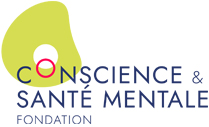
What is Psychedelic-Assisted Therapy (PAT)?
Psychedelic-Assisted Therapy (PAT) is an emerging, evidence-based approach to mental health treatment. It combines the carefully controlled administration of psychedelic substances — such as psilocybin (found in certain mushrooms), LSD, or MDMA — with structured psychotherapeutic support.
The role of psychedelics is not to “cure” on their own, but to facilitate an altered state of consciousness that, within a safe and supportive setting, can enhance therapeutic insight and emotional processing. This state often allows individuals to explore experiences and perspectives that may be less accessible in ordinary consciousness.
In Switzerland, Psychedelic-Assisted Therapy has benefited from a unique legal framework since 2014. The Federal Office of Public Health (FOPH) can grant special authorisations for the limited medical use of these substances to treat severe conditions, when conventional therapies have proven ineffective.
A Safe and Regulated Legal Framework
● Based on Article 8, paragraph 5 of the Swiss Federal Narcotics Act (LStup)
● Individual authorisations issued by the FOPH for a specific patient and substance
● Substances manufactured according to Good Manufacturing Practice (GMP) standards.
A Three-Step Therapeutic Protocol
● Preparation: Building a foundation of trust, clarifying therapeutic intentions and expectations, and ensuring informed consent.
● Experience: Conducted under the attentive supervision of one or more trained therapists, in a safe and supportive environment. Careful attention is paid to the participant’s state of mind (set) and the quality of the environment (setting) to foster optimal conditions for the experience.
● Integration: Subsequent psychotherapeutic sessions aim to help the individual make sense of the experience, translate insights into daily life, and support long-term psychological integration.
An Ethical and Quality-Assured Framework
● Psychedelic-Assisted Therapy is delivered by practitioners with advanced training in psychotherapy and specific expertise in PAT.
● Ongoing supervision, adherence to professional guidelines, and a strong emphasis on integrity, safety, and patient autonomy are essential.
● Quality standards are defined by the Interest Group for Psychedelic-Assisted Therapy (IG-PAT).

Who May Benefit from Psychedelic-Assisted Therapy?
PAT is intended for individuals suffering from treatment-resistant conditions, such as:
● Major depressive disorder resistant to medication
● Post-traumatic stress disorder (PTSD)
● Anxiety disorders, including those associated with serious or terminal illness
● Addictive disorders (alcohol, tobacco, substances)
● Certain indications in palliative care
Because there are clear contraindications (e.g., a history of psychosis or bipolar type I disorder), a thorough medical and psychiatric assessment is required prior to any treatment.
References and Official Recommendations
Our approach follows the guidelines established by IG-PAT, a professional community uniting the Swiss associations SÄPT, ASPT, and SSMP, which define recognised standards of safety, ethics, and quality in PAT:
● Swiss Federal Narcotics Act (LStup), Art. 8 para. 5 – legal basis for limited medical use
● Federal Office of Public Health (FOPH) – authorisation of individual treatments
● IG-PAT (2023) – treatment recommendations and best practice standards
● FDA (U.S. Food and Drug Administration, 2023) – draft guidelines for clinical studies on psychedelics
● MAPS (Multidisciplinary Association for Psychedelic Studies) – leading research on MDMA-assisted therapy for PTSD
● Swiss clinical studies (Gasser et al., Holze et al.) – pioneering data on LSD, MDMA, and psilocybin-assisted psychotherapy.

